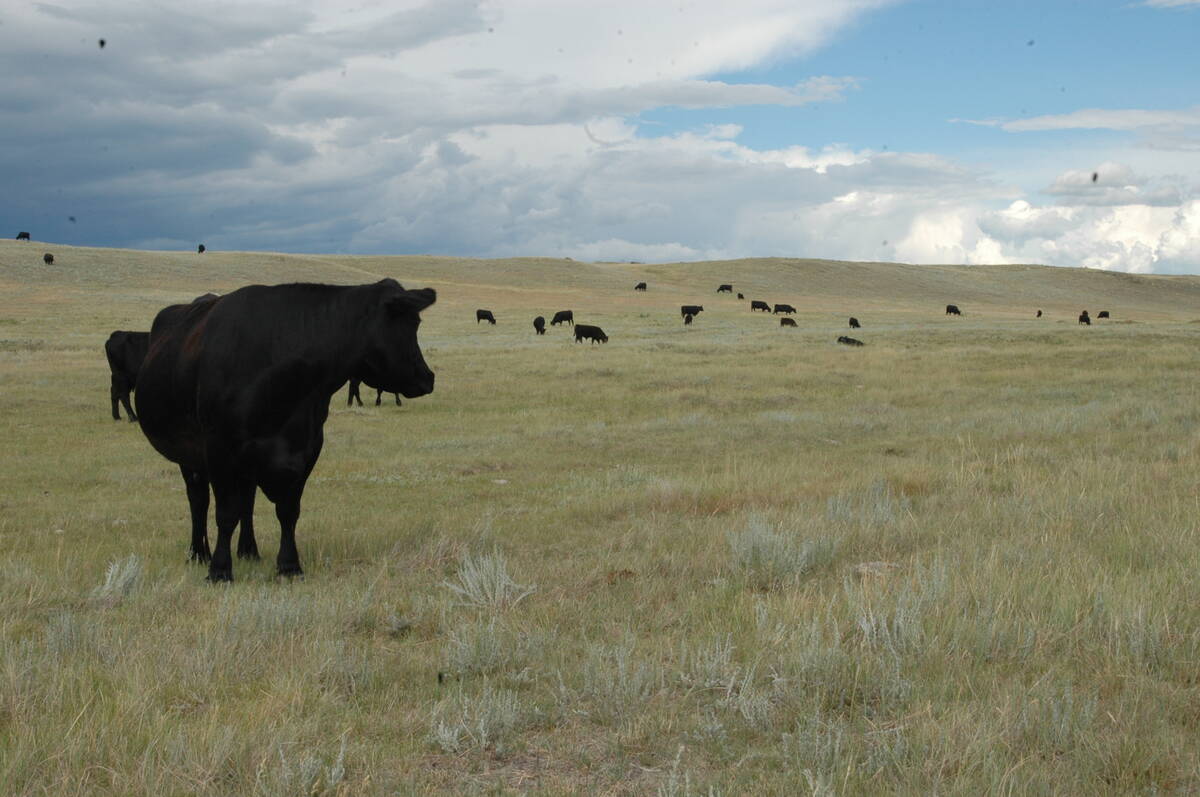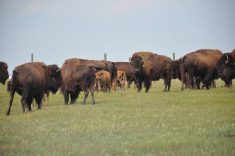REGINA – When international guests visit Canadian Western Agribition they can see elite purebred cattle with their polished hoofs and coifed coats, but the reality of what Canadian cattle can do is seen in the commercial barns.
The commercial component of the sale has been running almost since Agribition began 36 years ago.
A highlight for many is the commercial sale on the final day where hundreds of feeders, backgrounders and replacement heifers are on offer. An added feature is the bull pen alley where about 145 solid young commercial males can be seen in range condition from a number of well known breeders.
Read Also

Canadian Food Inspection Agency slammed for handling of bovine tuberculosis case
The federal government leans heavily on producers to “take one for the team” and risk their livelihoods without any reassurance of support.
For Mark Catley, the grand champion winner of a pen of 10 black replacement heifers, this is the place to show off his commercial herd. He raises between 350-400 cows at Craven, Sask.
A fifth generation rancher, his family has been raising cattle on the same farm for more than 100 years.
“It’s good exposure to let people see your cattle,” he said as he waited in a frigid barn for his turn in the ring.
The group won because of its uniformity in size and shape even though the sires varied. Catley sorted them in September and thought he had a good chance before the judge.
He wants to offer his customers dependable cows that wean a good calf every year.
“We’re producing cattle that you don’t have to do a lot of work with.”
Selling bred heifers this year has been more challenging. He advertised and received his asking price but knows in this competitive market the cattle have to deliver. Higher grain prices this fall are also depressing calf prices, so he likes coming to an event like Agribition because it generally pays above the going rate.
Reed Andrew, chair of the commercial cattle division at Agribition for the last seven years, said his committee is the largest and perhaps busiest at the exhibition, putting in 120 hours in five days weighing, sorting and placing cattle.
“It’s like having two sale days in an auction barn,” he said.
At one time the show was held outside but has moved indoors where more than 1,000 head can be held in pens. For this year’s event with its high wind chill and – 20 C days, the barns were cold, but it did not stop hundreds of visitors from checking the pens.
The calf sale was on par with current market prices but bred heifers were slightly down from last year. However, Andrew said the bred females tend to draw the greatest interest because of the quality.
“Everybody brings their best. You’re not buying second class cattle here.”
Andrew entered 50 calves including his grand champion 10 backgrounder steers, 20 feeders and two pens of 10 feeder heifers. His champion pen earned $1.29 a pound and sold to Superior Livestock.
He runs all Simmental cows and crosses them with Angus bulls at his farm near Regina.
As many as 1,400 people came to the fast paced auction. The total sale on 770 head was $865,916.
The 40 backgrounders with an average weight of 566 lb. grossed $27,322 to average $1.21 a lb. The offering of 285 feeder steers, average weight 756 lb., earned $1.03 a lb. for a total price of $222,936. The 95 feeder heifers averaged 94 cents a lb., average weight 691 lb., totalling $61,882.
In the open replacement heifer class, 120 were for sale. They were 688 lb. on average and grossed $92,150 to average $766 each. The 120 bred heifers were worth an average $1,138 and grossed $261,625.















